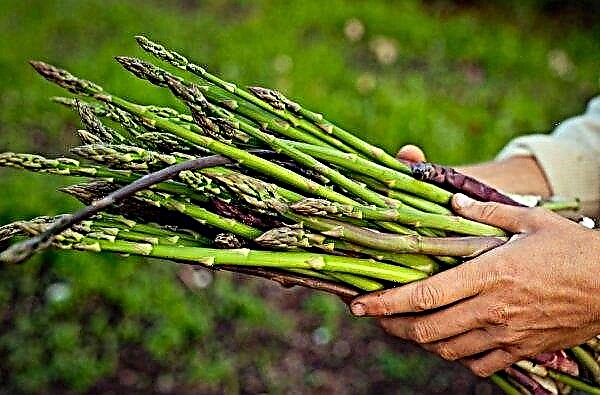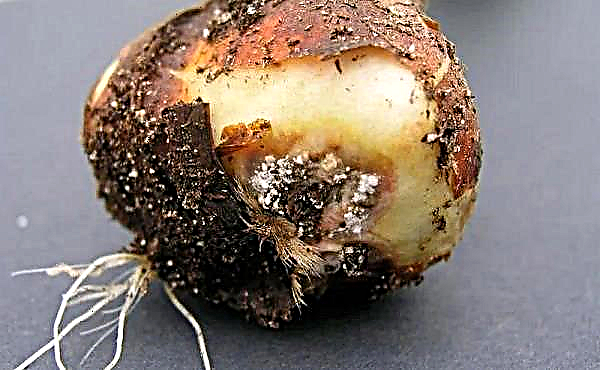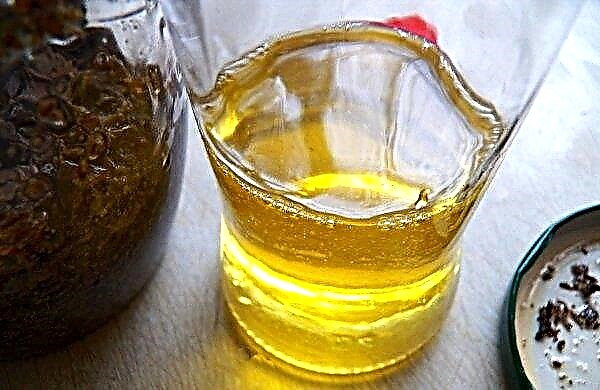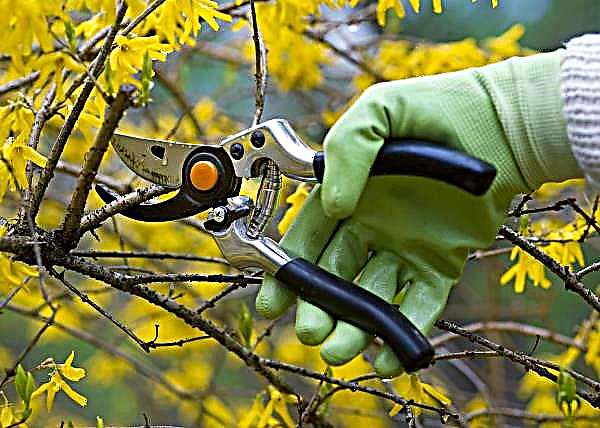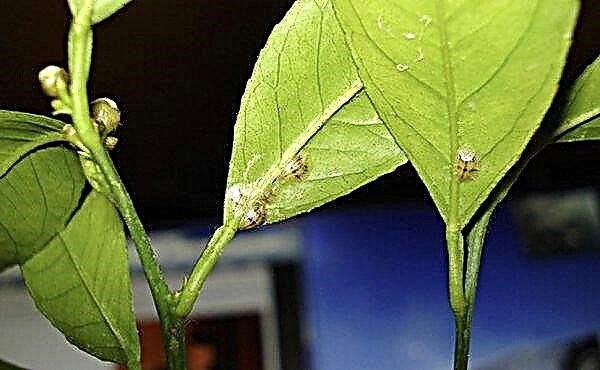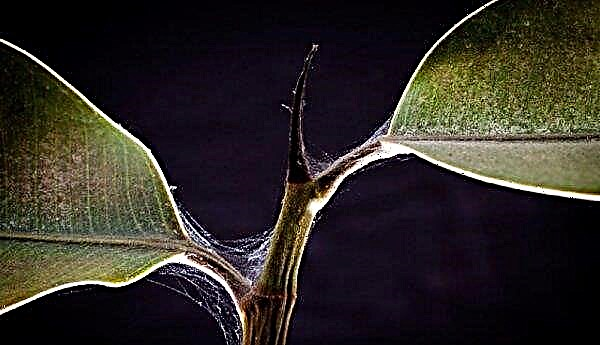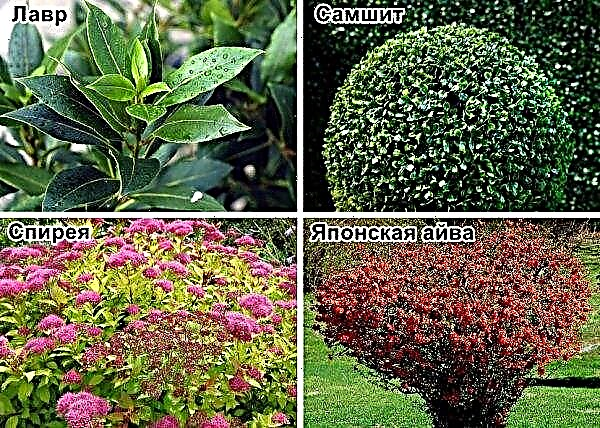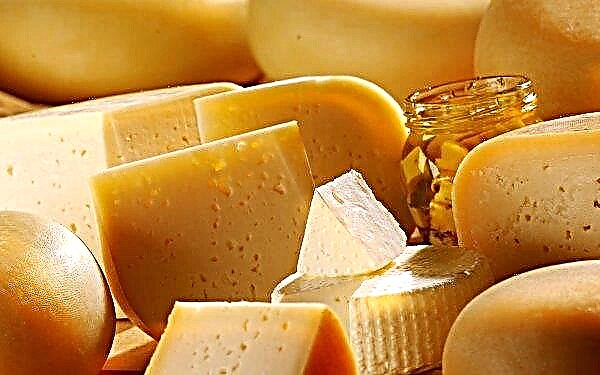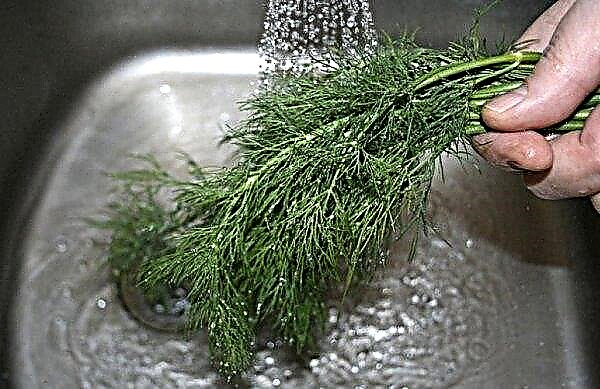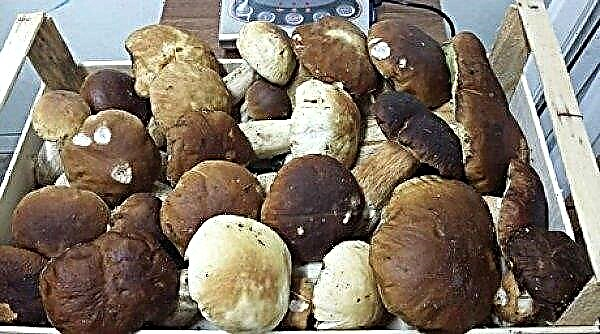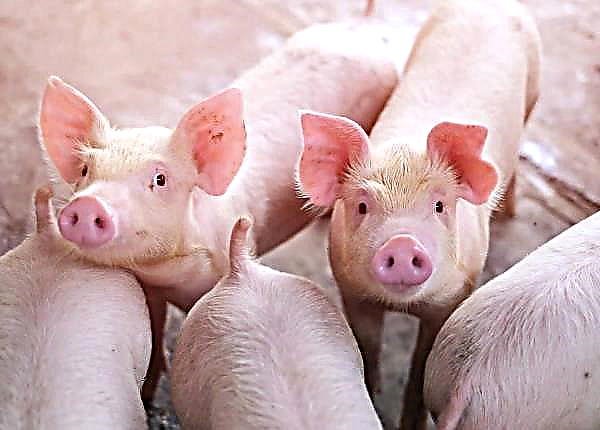Domestic apricot variety Champion of the North can be found on the sites of many gardeners. The variety has many advantages - this is due to its popularity among farmers. However, growing trees is associated with a number of important nuances. About the rules of planting and care of plantings, see below in the article.
Description and characteristics of the variety
The Champion of the North variety was obtained by Voronezh breeders L. Dolmatova and A. N. Venyaminov. The maternal variety is Northern Triumph. Apricots Champion of the North is zoned in the Central Black Earth region, which includes Belgorod, Voronezh, Kursk, Lipetsk and Tambov regions. Also, the variety is successfully grown in the suburbs.
Did you know? In the wild, apricots grow in the Caucasus and Turkmenistan. Homeland of the cultural form — Central Asia and China.
Trees grow up to 5 m. The crown is slightly leafy, branches are large. Apricots grow oval. The weight of one instance is 30–65 g. The more fruits on the branches, the smaller they are. Fruits are distinguished by pubescent orange peel with a slight raspberry blush. The pulp is bright orange, dry, due to which the fruits lie for a long time and tolerate transportation well. The bone is easily separated from the pulp. The taste of the fruit is sweet.
Frost resistance of the trunk and branches - up to –30 ° С. Flower buds are less cold-resistant, and can freeze during frosty winters. Also, plants show high immunity to most diseases.
 The first fruits ripen for 4 years after planting. The period of active fruiting is 20-30 years
The first fruits ripen for 4 years after planting. The period of active fruiting is 20-30 years
Chemical composition
Champion North apricots are distinguished by the following chemical composition:
- solids - 15.2%;
- sugars - 7.2%;
- acids - 2.1%;
- ascorbic acid - 10.1%.

Advantages and Disadvantages of Apricot Champion of the North
- Apricot Champion of the North has a large list of advantages:
- early bearing
- resistance to drought;
- frost resistance of the stem and shoots;
- high productivity;
- sweet taste;
- keeping quality;
- transportability;
- high immunity to many diseases.
- Of the shortcomings of gardeners distinguish:
- chopping fruits with abundant fruiting;
- low frost resistance of flower buds;
- poor resistance to clastosporiosis and moniliosis;
- frequent trunk warming in warm but snowy winters.
Rules and technology of planting varieties
Before planting, the gardener needs to determine the optimal timing. It is also important to prepare the site and seedlings. Direct landing is carried out according to clear technology.
Did you know? The Latin name of the apricot culture is Prunus armeniaca, which translates as “Armenian plum”.
Landing time
Apricot trees are planted in spring. The exact dates are selected based on the region of cultivation. By the time of planting, frost threats should be avoided, however, the procedure should be carried out before the start of the growing season.
Video: Apricot Planting Instructions
Soil preparation
Soil preparation consists in digging a landing pit. They dig a hole in the fall, six months before planting. The depth and width of the pit should be 0.6 m. The upper half of the earth is laid out of the pit - this is the fertile layer necessary for preparing the nutrient mixture.
To prepare a nutritious soil mix:
- 10 kg of fertile soil from the upper layer;
- 10 kg of compost;
- 10 kg of sand;
- 10 kg of grassroots peat;
- 2 liters of ash;
- 300 g of double superphosphate.
Pour the nutrient mixture into the bottom of the planting hole. Before planting, cover the foundation pit with plastic wrap.
Important! In sandy and sandy substrates, it is recommended to dig a landing pit with parameters of 1.5 m diameter, 1 m depth. Also, on these types of soil, sand is not added when preparing the nutrient mixture.
Selection and planting of seedlings
An important stage for a gardener is the purchase of a seedling. The survival and growth of the plant depends on the health of the planting material. About the quality of the seedling they say:
- age 1-2 years;
- straight trunk;
- several strong branches;
- the presence of living kidneys;
- branched root system.
It is better to buy seedlings in the fall. Immediately after purchase, the rhizome of the tree is treated with clay mash. Further, the seedling must be placed by the root system in sand or sawdust. In this state, it is placed in a dark room with a temperature of no higher than + 5 ° C. Another option is to dig the tree into the open soil, bending the trunk to the ground.

Landing pattern
When planting a seedling, adhere to the following planting algorithm:
- Form a hill at the bottom of the pit.
- Drive a wooden stake at a distance of 15 cm from the center of the hill.
- Place a seedling in the center of the pit.
- Spread the roots on the hill.
- Fill the empty space in the pit with soil.
 After planting, the tree is watered under the trunk
After planting, the tree is watered under the trunk
Features of plant care
Caring for an apricot tree includes crown formation, watering, top dressing and winter preparation.
Crown pruning
The first three years the plant is formed. As a result of annual pruning, a tree should be formed with the following indicators:
- shtamb to 0,6 m;
- 5-6 skeletal branches in the lower tier;
- fouling shoots on skeletal branches;
- fruiting branches on overgrown branches.
 Optimum distance between shoots - 25 cm
Optimum distance between shoots - 25 cm
In the following years, sanitary pruning is carried out every spring. It is needed to unleash the crown. The fewer fruits ripen on the branches, the larger and sweeter they are. For this reason, extra shoots must be removed.
As part of sanitary pruning, the following is removed:
- tops;
- branches growing inward;
- densely growing shoots;
- broken, frozen and diseased stems.
Watering
To water around the circumference of the trunk circle, you need to dig a trench. The furrow depth should be about 20 cm. Water is poured strictly into the trench.
Plants are watered three times a year:
- at the beginning of the growing season - 30 liters under a tree;
- at the time of fruit formation - 30 liters under a tree;
- in late autumn before frost - 60 liters under a tree.

Fertilizers and pollinators
The first 2 years after planting, apricots do not fertilize. The feeding scheme in subsequent years is as follows:
- beginning of vegetation - root dressing with a solution of 300 g of chicken droppings in a bucket of water; spraying with urea solution (700 g per bucket of water);
- before budding - root feeding of 1 liter of ash or urea solution (30 g per bucket of water);
- after flowering - root dressing with a solution of ash (2 l per bucket of water) or a complex mineral solution of 20 g of copper sulfate, 30 g of double superphosphate and 20 g of potassium sulfate in a bucket of water;
- when the ovary falls - spraying "Epin"; top dressing with an ash solution (2 l per bucket of water) or a complex mineral solution of 20 g of copper sulfate, 30 g of double superphosphate and 20 g of potassium sulfate in a bucket of water;
- at the time of active fruiting - apply 500 g of ash to the soil;
- at the end of autumn - when digging the soil, add 15 kg of compost.
Important! Before making root dressings, the soil is always watered.
According to varietal features, self-fertile variety. Growing pollinators is not required. However, with additional pollination, the yield increases. The best fruiting results apricots Champion of the North show if the Triumph of the North grows nearby.

Preparing plants for winter
The variety has high resistance to frost shoots. Flower buds can freeze. Due to the danger of death, trees are prepared for wintering.
Prepare as follows:
- Whiten the stem and skeletal branches in the base area.
- Dig the soil and mulch the fallen leaves.
- Young seedlings completely wrap agrofibre.
Diseases and Pests
In general, the variety's immunity to pests is high. However, some diseases and pests can still infect plants.
Of the diseases for the Champion of the North are dangerous:
These diseases cause fungal spores. For treatment, it is recommended to use fungicides. Of the chemicals, Chorus is doing well. Fungicide can be used in spring and summer. Three treatments are indicated for treatment. Between each spraying should take about 2 weeks. An effective and affordable remedy is copper sulfate. A solution of the drug in a concentration of 3% of the plantation is treated twice: before the start of the growing season and at the end of bearing.
Gardeners note the likely appearance of two types of pests on plants:
Parasites are excreted with insecticides. In spring and summer, when the risk of damage is highest, trees are sprayed with Fufanon. The tool is used twice. Between applications should take 1-1.5 weeks.
In order to prevent the development of diseases and pest attacks, take care of prevention in advance. Agronomists include preventive measures:
- timely cleaning of fallen leaves;
- regular pruning;
- digging the soil;
- annual preparations for winter, including whitewashing;
- spraying in early spring and late autumn with 3% solution of copper sulfate;
- weekly inspection of the stem, shoots, leaves and fruits for rot and plaque.

Apricot variety Champion of the North is unpretentious in care. Even a beginner in gardening can cope with growing trees. Following basic agricultural technology, the farmer will receive a healthy and tasty crop for 4 years after planting.

